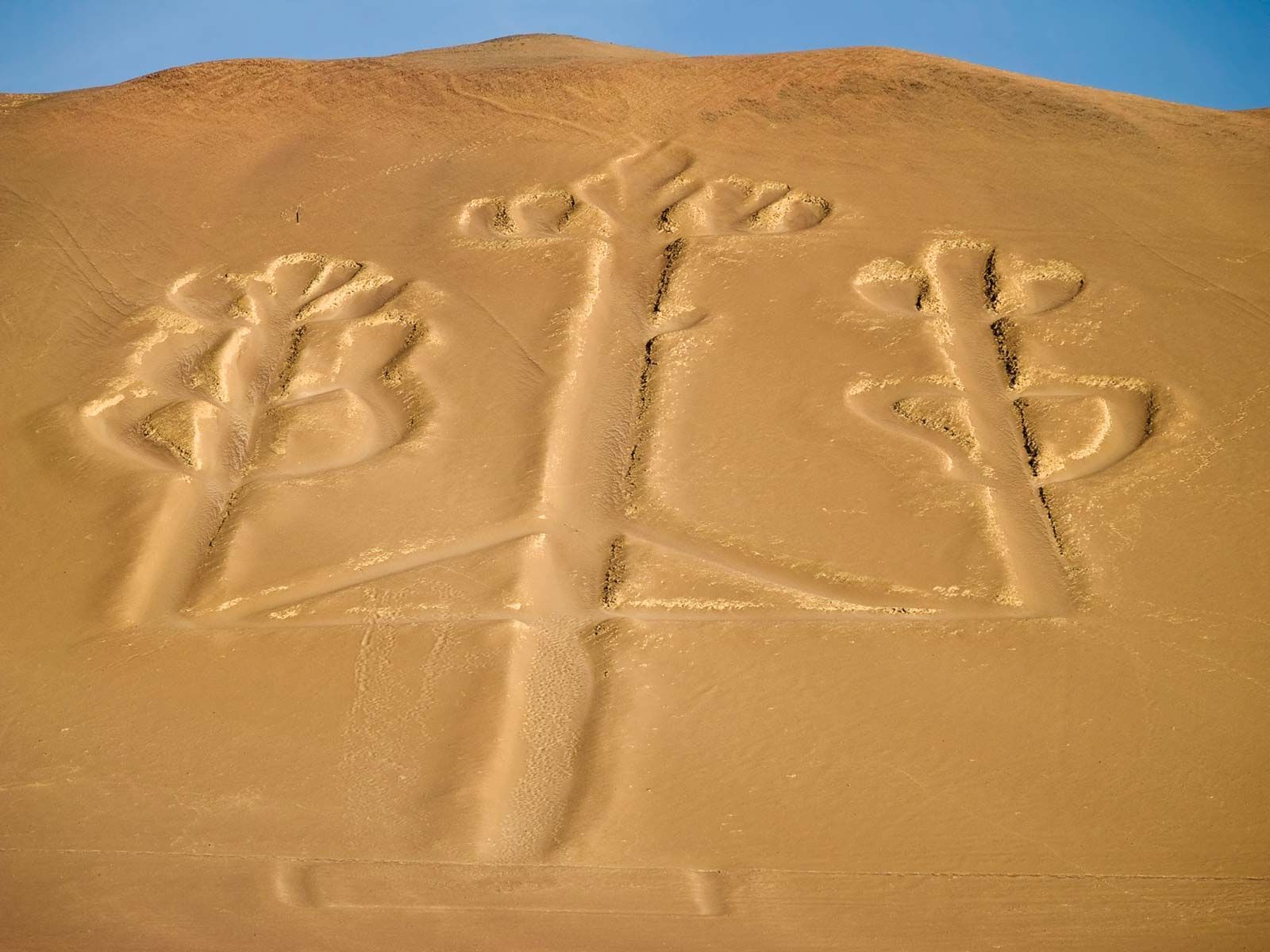
Have you ever gazed at the Nazca Lines and wondered about their secrets? These mysterious geoglyphs, etched into the Peruvian desert, have puzzled scientists and historians for decades. Stretching over 50 miles, these lines form intricate shapes and figures, visible only from the sky. But why were they created? Some suggest they served as astronomical calendars, while others believe they were offerings to deities. One thing is certain: their purpose remains an enigma. Did you know that the largest figure, a pelican, spans over 935 feet? Or that these lines have survived for over 2,000 years, thanks to the region's dry climate? Intrigued yet? Dive into these 28 fascinating facts about the Nazca Lines and uncover the mysteries of this ancient wonder.
What Are the Nazca Lines?
The Nazca Lines are a series of large ancient geoglyphs in the Nazca Desert, in southern Peru. These lines are one of archaeology's greatest mysteries, captivating the imagination of many. Let's dive into some fascinating facts about these enigmatic creations.
-
The Nazca Lines are located in the arid coastal plain of Peru, about 400 kilometers south of Lima. This desert region is one of the driest on Earth, which has helped preserve the lines for centuries.
-
These geoglyphs cover an area of nearly 1,000 square kilometers. That's roughly the size of New York City!
-
There are over 800 straight lines, 300 geometric shapes, and 70 animal and plant designs, known as biomorphs, etched into the ground.
-
The lines were created by removing the reddish-brown iron oxide-coated pebbles that cover the surface of the Nazca Desert. This reveals the light-colored earth beneath, creating a contrast that makes the lines visible.
-
The Nazca Lines were made by the Nazca culture between 500 BCE and 500 CE. This ancient civilization thrived in the region long before the Inca Empire.
How Were the Nazca Lines Created?
The creation of these lines is a marvel of ancient engineering. Despite their simplicity, the precision and scale are astounding.
-
The Nazca people used simple tools and surveying equipment to create the lines. They likely used wooden stakes and ropes to guide their work.
-
Some lines stretch over 30 miles long. Imagine the effort and coordination required to maintain such straight paths without modern technology!
-
The largest figures are up to 1,200 feet long. That's longer than three football fields!
-
The lines are shallow, only about 4 to 6 inches deep. Yet, they have remained intact for over a millennium due to the stable climate.
-
The Nazca Lines were not discovered until the 1920s when commercial airlines began flying over the Peruvian desert. From the ground, they are difficult to discern.
What Do the Nazca Lines Represent?
The purpose and meaning of the Nazca Lines remain a mystery. Scholars have proposed various theories over the years.
-
Some believe the lines were created as astronomical calendars, aligning with celestial events like solstices and equinoxes.
-
Others suggest they were part of religious or ceremonial practices, possibly related to water worship, as water was a precious resource in the desert.
-
The animal figures, such as the monkey, spider, and hummingbird, might represent deities or symbols of fertility.
-
Some researchers propose that the lines were a form of communication with the gods, meant to be seen from the heavens.
-
The geometric shapes could have been used for ritualistic purposes, possibly as pathways for ceremonial processions.
How Have the Nazca Lines Survived?
The preservation of the Nazca Lines is a testament to the unique environmental conditions of the region.
-
The Nazca Desert is one of the driest places on Earth, with less than an inch of rainfall annually. This lack of moisture has helped prevent erosion.
-
The stable climate, with little wind and consistent temperatures, has also contributed to the lines' longevity.
-
The desert's surface is covered with a layer of pebbles that have oxidized over time, forming a protective crust that shields the lines from damage.
-
Despite their resilience, the lines are threatened by human activity, such as urban development and mining.
-
In 1994, UNESCO designated the Nazca Lines as a World Heritage Site to help protect and preserve them for future generations.
What Challenges Do the Nazca Lines Face?
Preserving these ancient wonders is an ongoing challenge. Human activity and natural factors pose significant threats.
-
Illegal encroachments and squatters have damaged some areas of the lines, as people seek land for agriculture and housing.
-
Mining operations in the region have also posed a threat, as heavy machinery can disturb the delicate desert surface.
-
Climate change could alter the stable conditions that have preserved the lines for centuries, potentially leading to increased erosion.
-
Efforts are underway to monitor and protect the lines, using technology like drones and satellite imagery to track changes and assess damage.
What Makes the Nazca Lines Unique?
The Nazca Lines are not just lines in the sand; they are a testament to human ingenuity and creativity.
-
The sheer scale and precision of the lines are unmatched by any other ancient geoglyphs in the world.
-
The Nazca Lines are a unique blend of art, science, and spirituality, reflecting the complex beliefs and practices of the Nazca people.
-
They continue to inspire artists, archaeologists, and adventurers, drawing visitors from around the globe to marvel at their mystery.
-
The Nazca Lines remind us of the enduring legacy of ancient cultures and the importance of preserving our shared heritage.
Mysteries of the Nazca Lines
The Nazca Lines remain one of the world's most intriguing mysteries. These massive geoglyphs, etched into the Peruvian desert, continue to baffle scientists and historians alike. Their purpose is still unknown, sparking countless theories ranging from astronomical calendars to alien runways. What makes them even more fascinating is their sheer size and precision, achieved without modern technology. Despite being over 2,000 years old, the lines have withstood the test of time, thanks to the region's dry climate.
Preservation efforts are crucial to protect these ancient wonders from threats like erosion and human activity. As technology advances, new methods of studying the lines may provide more insights into their origins and significance. Until then, the Nazca Lines will continue to captivate imaginations, reminding us of the ingenuity and mystery of ancient civilizations. Their secrets may remain hidden, but their allure is undeniable.
Was this page helpful?
Our commitment to delivering trustworthy and engaging content is at the heart of what we do. Each fact on our site is contributed by real users like you, bringing a wealth of diverse insights and information. To ensure the highest standards of accuracy and reliability, our dedicated editors meticulously review each submission. This process guarantees that the facts we share are not only fascinating but also credible. Trust in our commitment to quality and authenticity as you explore and learn with us.


